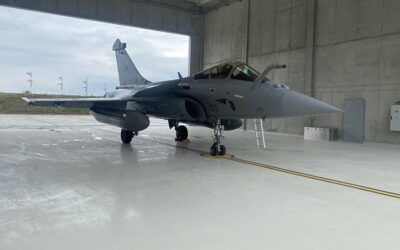Barrett Highlights waveforms and protocols
Barrett Communications highlighted to MONS a number of capabilities which allow its High Frequency (HF: three megahertz/MHz to 30MHz) radios to interoperate with other third party military and civilian tactical radios.
In particular, the firm has highlighted its link set up and short messaging waveforms which permit digital selective calling, “based on CCIR 493-4 four and six digit systems,” which it says are, “fully compatible with other manufacturers’ four and six digit systems including encrypted systems.”
Moreover, Barrett’s Automatic Link Establishment (ALE) protocols meet the US Department of Defense’ (US DOD) MIL-STD-188-141B second generation and MIL-STD-188-141C third generation (3G) military standards, alongside NATO’s Standardisation Agreement 4538 (STANAG 4538). The company continues that its HF products also conform to a number of US DOD military standardisation requirements and NATO STANAGs regarding data transfer.
These waveforms and protocols, Barrett adds, can be used across its Barrett 2000 series and Barrett 4000 series transceivers, noting that: “Some of the waveforms are inherent in Barrett product software as standard or through software activation. Subject to radio series many of the data can be uploaded through software or thought the addition of internal (or external) hardware.”
Such enhancements include, “improved ALE Software operation with new ALE features and increased Clover Modem speeds are made available to pre-existing customers by way of software/firmware updates.”
Furthermore, “in the last twelve months Barrett has introduced 3G ALE and data systems to their new 4000 series range, with some 3G features and options now being rolled out across the existing 2000 series range.”
Looking forwards the future, the company expects HF radio to continue to evolve to become yet more user friendly: “One of the biggest obstacles to the use of HF radio has been the limited general understanding the HF environment, how it works and the inherent difficulties in operating HF radios.”
The firm continues that, “the development of HF radios and waveforms and the introduction of new improved link set up protocols and digital voice systems have made HF systems more accessible to a wider audience.”
The upshot of such modernisations is that, “the use of HF is almost no different to using your mobile phone.”
Thomas Withington

























